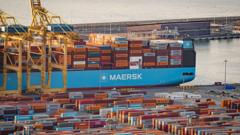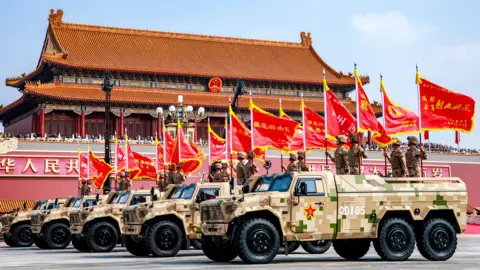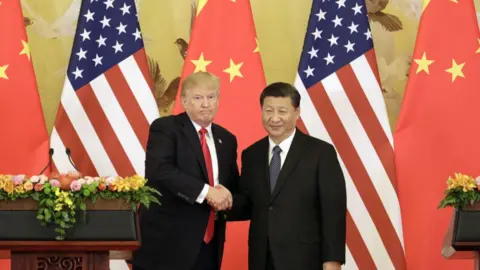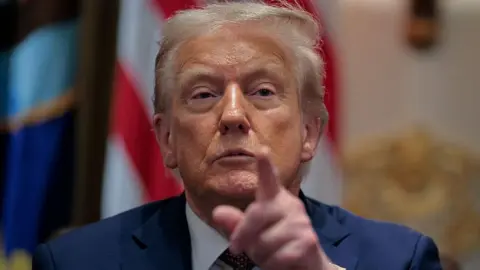The US and EU have reached a significant trade agreement just ahead of upcoming tariff negotiations with China after weeks of tense talks between their senior trade officials. The deal marks a crucial moment for both sides, as trade between the US and the EU represents the largest bilateral trade and investment relationship in the world. Notably, the agreement has been touted by both US President Donald Trump and European Commission President Ursula von der Leyen as a victory, despite the complexity involved in its details.
The situation is seen as favorable for the EU, where the newly negotiated tariff rates are set at 15%, a considerable reduction from the initially threatened 30%. However, the US stands to gain approximately $90 billion in tariff revenue, based on previous trade figures, and is expecting an influx of $600 billion in investments as part of the deal. Following this agreement, the finer details remain under scrutiny, with many questions regarding the timeline and focus areas for the anticipated investments.
One key to this deal was the personal involvement of both leaders since it reflects years of contention related to trade deficits, strict European regulations, and accusations of unfair practices. The US has maintained a trade deficit, importing $236 billion more than it exports to the EU last year, leading to a perception of economic loss. Von der Leyen has acknowledged the need to address this imbalance, stating, "We have to rebalance it. We have an excellent trade relation."
The complexity of negotiating with the diverse 27-nation bloc of the EU adds layers of difficulty to finalizing the details of this agreement. This deal comes in conjunction with a series of other trade agreements struck by the US, including recent discussions with Japan and potential negotiations with Canada, Mexico, and China. The upcoming talks in Stockholm with China are particularly crucial, as the US seeks to navigate higher tariffs while also addressing the sticking point over rare earth metals exports.
While this agreement holds promise for smoother trade relations, uncertainty looms regarding the fidelity of its execution and whether both parties can successfully navigate the intricate landscape of global trade negotiations in the coming months.
The situation is seen as favorable for the EU, where the newly negotiated tariff rates are set at 15%, a considerable reduction from the initially threatened 30%. However, the US stands to gain approximately $90 billion in tariff revenue, based on previous trade figures, and is expecting an influx of $600 billion in investments as part of the deal. Following this agreement, the finer details remain under scrutiny, with many questions regarding the timeline and focus areas for the anticipated investments.
One key to this deal was the personal involvement of both leaders since it reflects years of contention related to trade deficits, strict European regulations, and accusations of unfair practices. The US has maintained a trade deficit, importing $236 billion more than it exports to the EU last year, leading to a perception of economic loss. Von der Leyen has acknowledged the need to address this imbalance, stating, "We have to rebalance it. We have an excellent trade relation."
The complexity of negotiating with the diverse 27-nation bloc of the EU adds layers of difficulty to finalizing the details of this agreement. This deal comes in conjunction with a series of other trade agreements struck by the US, including recent discussions with Japan and potential negotiations with Canada, Mexico, and China. The upcoming talks in Stockholm with China are particularly crucial, as the US seeks to navigate higher tariffs while also addressing the sticking point over rare earth metals exports.
While this agreement holds promise for smoother trade relations, uncertainty looms regarding the fidelity of its execution and whether both parties can successfully navigate the intricate landscape of global trade negotiations in the coming months.





















